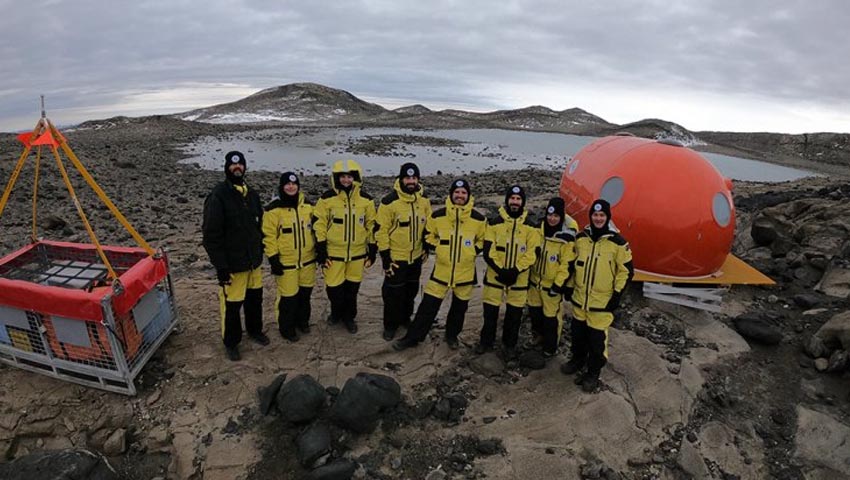Members of Navy’s Maritime Geospatial Warfare Unit deployed to Davis research station in Antarctica recently, where they completed mandated field survival training and small boats induction, prior to commencing survey tasks in support of Operation Southern Discovery.
To continue reading the rest of this article, please log in.
Create free account to get unlimited news articles and more!
The induction coarse for small boats teaches coxswains about the various dangers present in the waters off Davis Station.
In the minus 7-degree weather, training in the field included an eight-kilometre hike and instruction on how to use specialised survival kits and an overnight bivouac.
Despite the harsh weather and arduous terrain, the Defence Force members enjoyed themselves thoroughly.
The small boats induction was conducted in the waters surrounding Davis Station and included how to assess sea ice and techniques on how to manoeuvre through sea ice and around icebergs.
The small boat induction was definitely an eye opener for coxswain Leading Seaman Hydrographic Survey Operator Tanya Maksimovic, who for the first time in her career had to drive around icebergs and dodge swimming penguins.
Leading Seaman Marine Technician Ben Seehars said that the field survival training was an unbelievable experience.
“To see Antarctica from that vantage point will never be forgotten,” he said.
With all the required training and inductions complete, the team then undertook survey operations in Antarctica.
Australia, along with a growing number of other states, both individually and collectively, has longstanding interests, presence, activities and involvement in Antarctica and the Southern Ocean.
The Antarctic Treaty System (ATS) provides the overarching international framework for the governance of the land and waters south of 60 degrees south latitude.
Intended to help ensure the predominance of science as well as peaceful resolution of disagreements, the ATS sets aside any resolution of individual states’ Antarctic sovereignty claims, without strengthening or diminishing those claims.
While the treaty contributes to the legal framework within which states’ interests are pursued and governed, it remains apparent that, for states to preserve their Antarctic claims and interests, there is a need for them to maintain a level of activity commensurate with those interests. In practical terms, the ‘use it or lose it’ principle appears to apply.

 Login
Login







